1. Values Orientations Method
1.1. Strengths
1.1.1. Provides History: Provides an answer to basic questions regarding culture.
1.1.2. Reflects Human Traits: Gives the interviewer an idea of the person's background by observing body language and facial gestures to depict value system and tendencies.
1.1.3. Allows for Communication: Allows the interviewer to discover the belief system as well as communication methods.
1.2. Drawbacks
1.2.1. Can come off strong: Some questions may appear insensitive to the interviewee.
1.2.2. May pressure interviewee: Questions may appear to make the person uncomfortable.
1.2.3. Inaccuracy of responses: The person may respond "politically correct", but may not answer what he/she truly thinks.
1.3. The Value Orientation Method is one where human concerns are measured to determine potential values. It Assesses thinking patterns and aims at determining their "world-view" by weighing their responses to five key questions about their views on nature, man-nature, sense of time, activities, and social relations.
2. Cross-Cultural Survey
2.1. The Cross-cultural Surveys Method addresses certain patterns of thinking with regards to values. This method also puts the reader in the subject's shoes, and allows the reader to understand the survey taker in-depth.
2.1.1. Strengths
2.1.1.1. 1. Specifies viewpoints: The line of questioning allows for follow-up questions to relate to initial responses.
2.1.1.2. 2. Paper Method Effective: Answering questions on a sheet of paper may feel less invasive than answering to a person.
2.1.1.3. 3. Time management efficient: This method allow for surveys to be conducted more efficiently and in higher quantities, as opposed to interviewing one-on-one.
2.1.2. Drawbacks
2.1.2.1. 1. Standard/short formatting: The survey format may incline takers to speed through it and not answer honestly.
2.1.2.2. 2. Broad questioning: The types of questions asked may not apply to every student.
2.1.2.3. 3. Multiple choice lacks depth: By making students answer in writing, as opposed to answering a multiple choice format, the feedback obtained may be more useful.
3. Questionnaires
3.1. 1. Unlike cross-cultural surveys, a questionnaire is a "series of questions used for gathering information that is used to benefit a single individual. While more than one individual might complete the questionnaire, the responses are not aggregated for analysis" (McKee, 2015).
3.1.1. Strengths
3.1.1.1. 1. High volume response rate
3.1.1.2. 2. Increases population coverage
3.1.1.3. 3. Cost efficient
3.1.1.4. 4. Ease of use/less manpower
3.1.2. Drawbacks
3.1.2.1. 1. Decreased participation
3.1.2.2. 2. Reduces population targeting accuracy
3.1.2.3. 3. Limits population insight
3.1.2.4. 4. Increases chances of cultural bias
4. Interviews
4.1. Cross-cultural interview involve an interviewer and interview usually from different backgrounds and experiences who engage in conversation based on a set or informational block of questions designed to glean a better understanding of the culture of the group of study (Schneider, 2012).
4.1.1. Strengths
4.1.1.1. 1. More in-depth answers with rational
4.1.1.2. 2. Removes ambiguity in answers
4.1.1.3. 3. Increased rate of response
4.1.1.4. 4. Enriches the quality of the data collected
4.1.2. Drawbacks
4.1.2.1. 1. Potentially costly because of the factors involved; logistics, travel, etc.
4.1.2.2. 2. Time consuming and labor intensive
4.1.2.3. 3. Interviewer bias- Inadvertent bias occurs when questions posed by the interviewer does not reflect the priorities of the culture or population
4.1.2.4. 4. Validity challenges - Anecdotal responses in diverse populations reduces the likelihood results can be reproduced or applied in other populations.
5. Ethnography
5.1. Ethnographic or multicultural research involves field observation and the qualitative analysis of cultural behavior. Observers inject themselves into the daily lives of the group of study and chart various aspects that would serve to better understand their culture and way of thinking, doing, and overall paradigm/worldview (Kosthner, 2009).
5.1.1. Strengths
5.1.1.1. 1. It can easily evolve and uncover new things. Often, concerns or beliefs not previously shared or inaccurately shared have a voice.
5.1.1.2. 2. Provides a unique opportunity to truly understand culture from an intimate perspective
5.1.1.3. 3. Observers are permitted to gain cultural competence while also acknowledging their own biases and unconscious prejudices
5.1.1.4. 4. An opportunity to test various theories and constructs are made available.
5.1.1.5. 5. The potential for robust and rich data is possible.
5.1.2. Drawbacks
5.1.2.1. 1. Difficulty in choosing representative sample. Multiple cultures can be embedded with a culture.
5.1.2.2. 2. Extremely time consuming to extract necessary data to create a robust study.
5.1.2.3. 3. The entire success of the ethnography depends on the observers ability to be personable and make the members of the study group feel at ease. The researcher must be able to build relationships and trust.
5.1.2.4. 4. The openness and honesty of the group or lack thereof, threatens the success of the ethnography. If the group does not feel a kinship to the researcher, then they will not be willing to open up and share their perspective or allow them "into" their world/culture.
5.1.2.5. 5. Ethnographies can lead to cultural bias. Irrespective of how objective the ethnography tries to be, their own "cultural biases or ignorance" (Green Garage, 2015, para. 13) can influence them.
